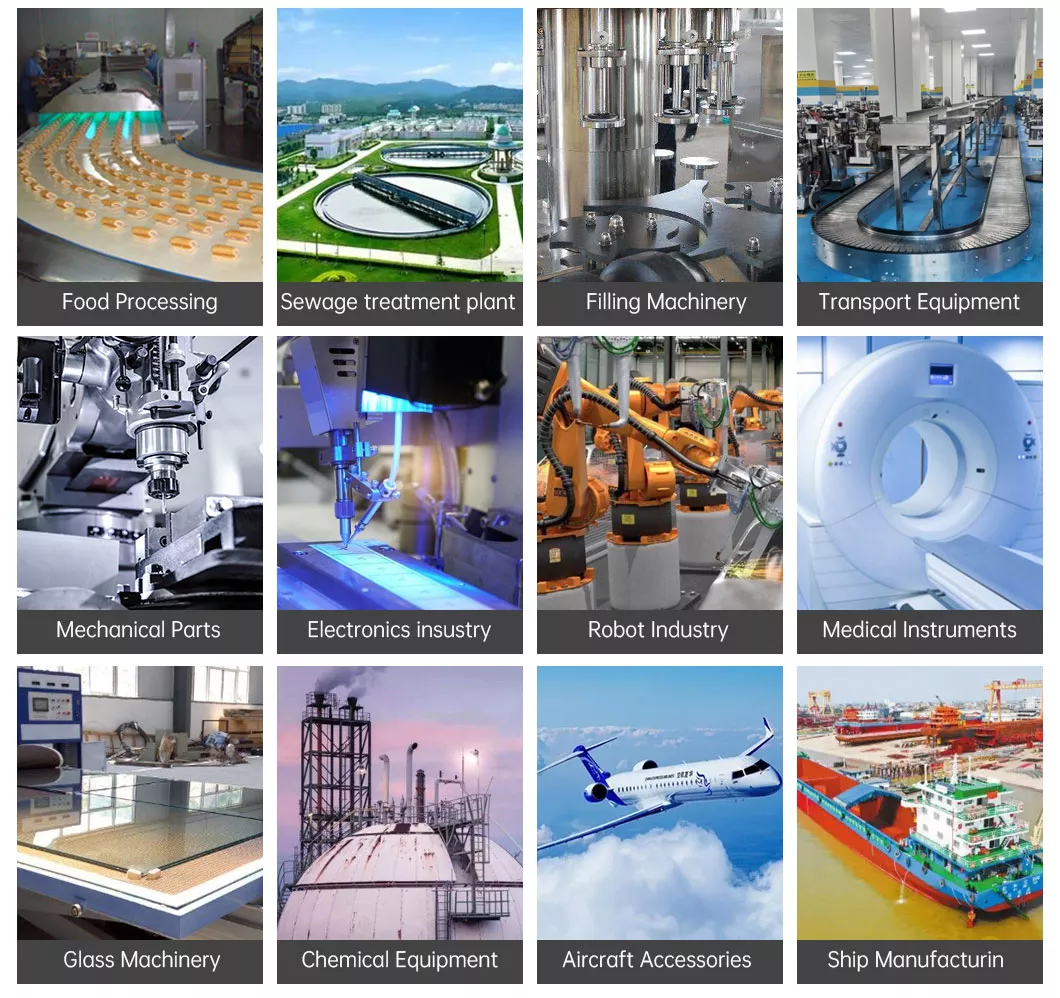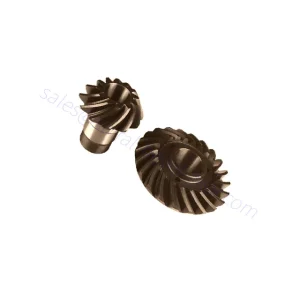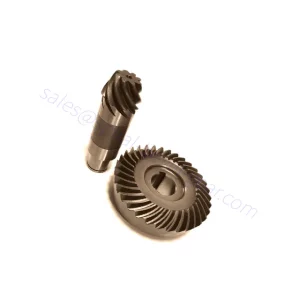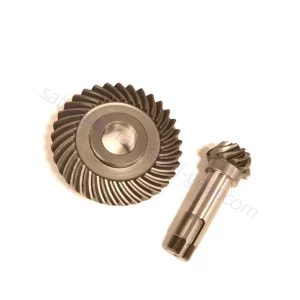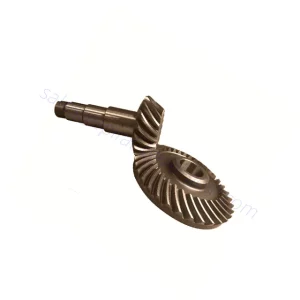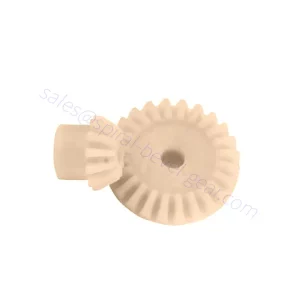
spiral bevel gear
Professional Manufacturer
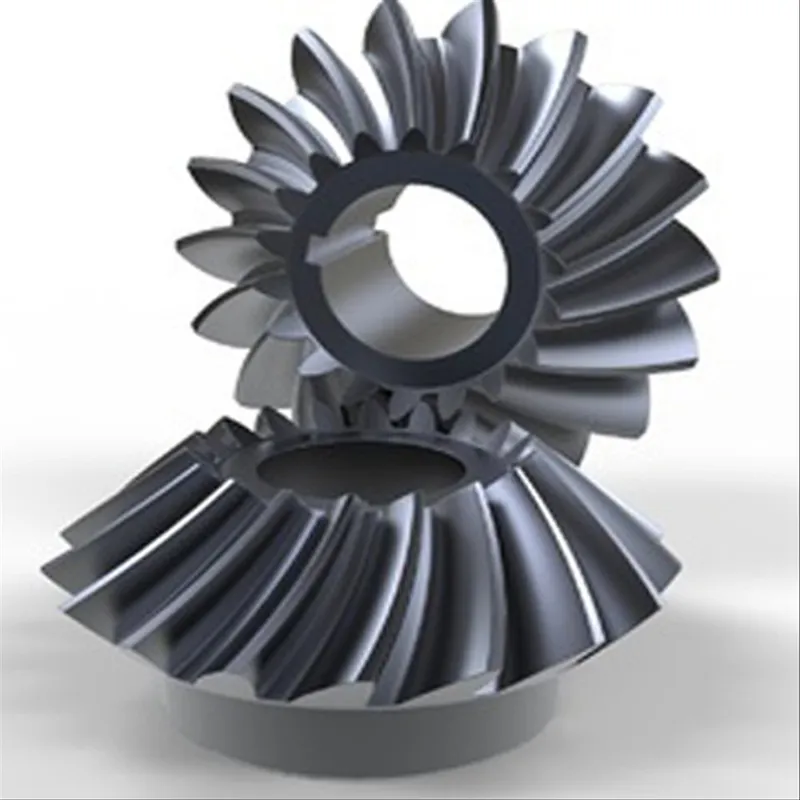
High transmission efficiency
Among various mechanical transmissions, the transmission efficiency of spiral bevel gears is the highest, which has great economic benefits for various types of transmissions.

Stable gear ratio
Spiral bevel gear transmission ratio is permanently stable, and the transmission ratio is stable.

High carrying capacity
Spiral bevel gears are widely used in aviation, automobile and other industries because of their high bearing capacity, low noise and smooth transmission.
About Spiral Bevel Gear
A Spiral Bevel Gear are used to transmit power between shafts that are at a 90-degree orientation to each other. Also, these custom parts are engineered with precision teeth which have a unique curve and are oblique in shape. The teeth have one concave, one convex side, feature a curve and have a spiral angle. This spiral angle is located from the tooth trace and pitch cone, resembling a helix angle that is located in teeth of helical types.
Since spiral bevels are not offset, less sliding occurs within gear teeth. This results in a low temperature operation with more efficient functionality than hypoid gearing types. Also, since there is a large amount of tooth surface this allows for greater interlocking during the rotation process. Because of this overall efficient operation, our custom spiral bevel gears are perfect for high speed, high torque transmission and power generation application types.
Benefits Of Spiral Bevel Gears?
Spiral bevel gears are primarily used as vehicle differentials, helping to assist the driveshaft and making vehicle wheels turn 90 degrees. Compared to straight-cut or spur-cut versions, spiral bevels cause less noise and less vibration due to their curved shape. Therefore these gears are an essential part of smooth and safe driving.
Differences between straight bevel gear and spiral bevel gear?
| Straight Bevel Gear | Spiral Bevel Gear |
|---|---|
| Teeth of this type of gear are straight and are cut along the axis on a cone. | Here the teeth are spiral and are cut in the form of spiral curve on the pitch cone. |
| Two teeth of the mating gears come in sudden contact. The contact is always a line of length equals to face width of teeth. | Teeth of two mating gears gradually come in contact. Engagement starts with a point and gradually becomes a line. |
| Due to sudden contact, teeth are also subjected to impact or shock loading. | Here teeth are subjected to gradual loading. |
| Sudden contact also causes noise. | Its operation is quite. |
| Shock loading induces vibration and thus its operation is not smooth. | Due to gradual building up of load, it produces less vibration and thus the operation is smooth. |
| Designing and manufacturing of straight teeth bevel gear are easier and thus these are cheaper. | Complicated design and manufacturing leads to higher cost for this type of gear. |
| It exerts less thrust force on the bearings that hold the shafts. | It exerts more thrust force on bearings. |
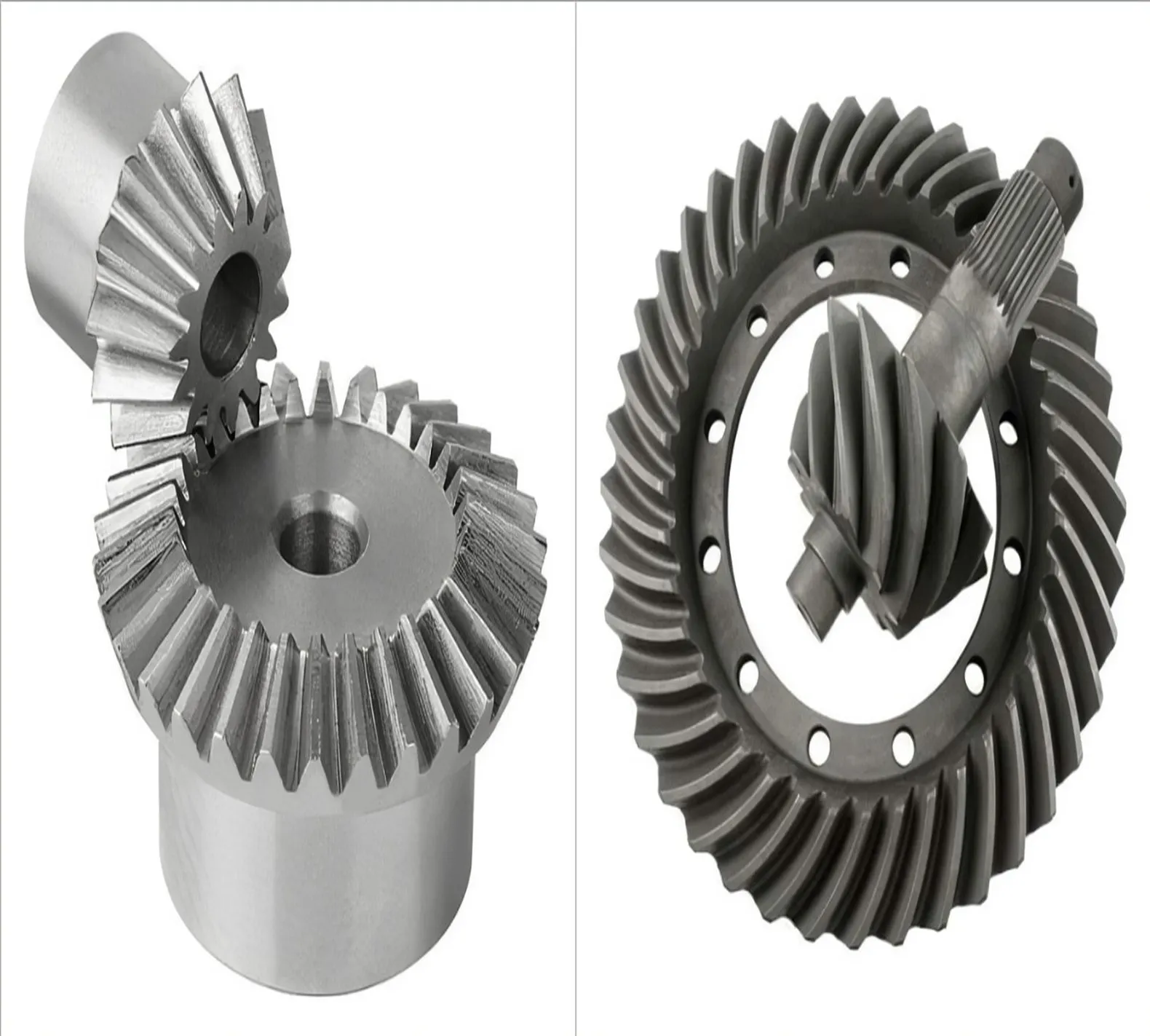
Application of spiral bevel gear
Spiral bevel gear has been widely used because of its advantages. It is mainly used in mechanical engineering fields such as petroleum, mining, machine tools, coal mining machinery, motor vehicles, trains, ships, aviation helicopters and so on.
Bevel gears are used in vehicles of all types as well as industrial applications such as wind turbines and cooling towers, steel manufacturing, and printing presses. If your application requires high rpm, high torque, and/or many load cycles, spiral bevel gears will be the best choice. Spiral design is also recommended for reducing speed. If your application requires transferring power to two shafts which are spinning at different speeds – a vehicle differential, for instance – the best choice is a hypoid bevel gear.
Main Products
The teeth of spiral gears are curved and oblique, in contrast to the teeth orientation of straight bevel gears. This results in more overlap between teeth which promotes gradual engagement and disengagement upon tooth contact. This improved smoothness results in minimal vibration and noise produced during operation.
Spiral bevel gear video
According to the customer’s drawings, we can produce large forging, casting, welding, and spiral bevel gears. According to the working conditions and clients’ requests, we also can do gear grinding, surface hardening, cemented and quenching, Nitriding, quenching, etc.
We provide customized services
Accept custom made spiral gears as per drawings and samples.
high transmission efficiency, smooth operation, low noise, not easy to corrosion and rust
various specifications, support non-standard customization
“With over 20 years of rich experience, it specializes in gears, shafts and other parts, with advanced equipment, production capacity management, quality control, research and development, exhibition experience, and export market.”
“We have exported our products to clients worldwide and earned a good reputation because of our superior product quality and after-sales service. Any requirement for Non-standard gears, we welcome your drawing or samples. We can develop for you what gears you want.”
Spiral Bevel Gear Plunge Grinding
Plunge grinding is a discontinuous grinding process in wich machining is also performed tooth by tooth. Both tooth flanks are machined simultaneously. There is a surface contact between tooth flank and grinding wheel. Due to the plunge movement of the grinding wheel in axis direction, the grit path runs in parallel to the tooth base and the surface structure runs in tooth width direction.
Grinding grooves running in parallel to the tooth base emerge. The grinding direction is from ring gear toe at the inner diameter to ring gear heel at the outer diameter, or vice versa. Only ring gears can be produced by means of plunge grinding. Pinions cannot be ground with this process due to their geometry.
Additional oscillating movement besides main rotation of the grinding wheel
Grinding spindle is positioned in eccentric bushing, separately driven
Eccentric value between 0.1 mm and 0.3 mm
Eccentric speed approx. 200 – 500/min slower than rotational speed of the grinding wheel
Improved surface in pinion grinding
Frequently Asked Questions
Learn more about spiral bevel gear
What is a spiral bevel gear?
How to install spiral bevel gears?
What are the characteristics of bevel gear transmission?
What is the principle of spiral bevel gear?
Transmission efficiency of spiral bevel gears?
Technical performance requirements of spiral bevel gears?
Contact Us Anytime!
We warmly welcome customers both at home and abroad to contact us to negotiate business, exchange information, and cooperate with us.
